Semuliki National Park is found in western Uganda in the district of Bundibugyo which lies on Uganda’s border with DR Congo. The park is bordered by Lake Albert in the northern side and the Rwenzori Mountains on the south Eastern side. Two rivers, Lamia and Semuliki are found at the parks borders. Semuliki National Park lies on relatively flat land making it prone to flooding when the Park Rivers receive too much rain during the wet season.
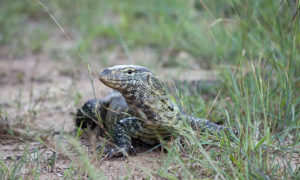 Semuliki begun as a forest reserve in 1932 and was made a national park in 1993 mainly to curb deforestation. Semuliki National Park is often confused with the Semliki Wildlife Reserve which is adjacent to the park. The forests in Semuliki are an extension of the great Ituri Forest that stretches all the way to the River Zaire. This extension implies that many of the tree and animal species found in Central Africa can be found in the park. The conditions in Semuliki are completely different from any other national park in Uganda, Kenya or Tanzania but instead similar to those in central Africa.
Semuliki begun as a forest reserve in 1932 and was made a national park in 1993 mainly to curb deforestation. Semuliki National Park is often confused with the Semliki Wildlife Reserve which is adjacent to the park. The forests in Semuliki are an extension of the great Ituri Forest that stretches all the way to the River Zaire. This extension implies that many of the tree and animal species found in Central Africa can be found in the park. The conditions in Semuliki are completely different from any other national park in Uganda, Kenya or Tanzania but instead similar to those in central Africa.
Semuliki is well known as a top birding destination in Uganda. The park has over 410 species of birds. About 67 percent of the species are forest birds like the Blue-headed Crested Flycatcher, Capuchin Babbler, , Dwarf Honey guide, Forest Ground Thrush, , orange weaver, Purple-breasted Sunbird, Sassi’s Olive Greenbul and White-tailed Hornbill. Because the forest joins with that from DR Congo, some species unique to central Africa like the Black-wattled Hornbill, Congo Serpent Eagle, Long-tailed Hawk, Lyre-tailed Honey guide and Nkulengu Rail can be found in the park.
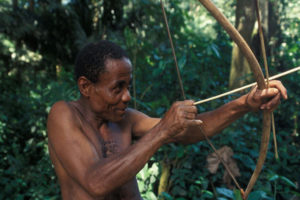 There are 60 species of mammal in the park among which include the bay duiker, Beecroft’s Anomalure, flying squirrels, bush babies, bush pigs, civets, Dwarf Antelope, elephants, fruit bats, Fire-footed Rope squirrel, forest buffalos, pygmy hippos, leopards, Little collard fruit Bat, mona monkeys, pygmy flying squirrel, Red-legged Sun Squirrel, Sitatunga, target rats, water chevrotains, water bucks, warthogs, Uganda Kob, White-bellied Duiker and the Zenker’s Flying Mouse. About 300 species of butterflies (like the charaxes and forest swallowstails) and 8 of primates can be found in the park forests like blue monkeys, chimpanzees, De Brazza’s Monkeys, Guereza Colobus, vervet monkeys and olive baboons. There are also night primates like the pattos and galagos.
There are 60 species of mammal in the park among which include the bay duiker, Beecroft’s Anomalure, flying squirrels, bush babies, bush pigs, civets, Dwarf Antelope, elephants, fruit bats, Fire-footed Rope squirrel, forest buffalos, pygmy hippos, leopards, Little collard fruit Bat, mona monkeys, pygmy flying squirrel, Red-legged Sun Squirrel, Sitatunga, target rats, water chevrotains, water bucks, warthogs, Uganda Kob, White-bellied Duiker and the Zenker’s Flying Mouse. About 300 species of butterflies (like the charaxes and forest swallowstails) and 8 of primates can be found in the park forests like blue monkeys, chimpanzees, De Brazza’s Monkeys, Guereza Colobus, vervet monkeys and olive baboons. There are also night primates like the pattos and galagos.
The forests and animals in Semuliki National park continue to be threatened by encroachment from human living around the park. The park animals are still hunted for their meat while the forests provide herbs, vegetables and firewood. Two main tribes live outside the park, the Bamba and Bakonjo.
The Bamba grow crops at the foot of the Rwenzori Mountains while the Bakonjo cultivate the slopes of the mountain. There are also pastoralists like the Batuku and the Batwa hunters at the edge of the forest in the park. About 120 Basua still live as hunters and gatherers in the forest. The Basua are pygmies similar to the Batwa and have also lived in the forests for thousands of years but their recent eviction from parts of the forest and failure to adapt to life outside the forest has led to concerns about the impact of unplanned eviction on certain indigenous tribes. Like some of the forests and wildlife being protected, the Basua people face total extinction and the eradication of their culture and heritage as a result of being removed from the forest.
Things to do in Semuliki National Park
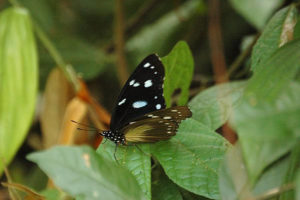 There is no shortage of what to do in the park. Tourist interested in visiting Semuliki can choose to go for forest walks, birdwatching, primates watching, visiting the two hot springs, hiking and game drives. A cultural visit to one of the local tribes living outside the park should not be missed for a complete safari in Semuliki National Park.
There is no shortage of what to do in the park. Tourist interested in visiting Semuliki can choose to go for forest walks, birdwatching, primates watching, visiting the two hot springs, hiking and game drives. A cultural visit to one of the local tribes living outside the park should not be missed for a complete safari in Semuliki National Park.
Visiting the Sempaya Hot Springs: The two hot springs have made the park very famous. Tourists are more fascinated by the local stories about their formation than the scientific explanation. There is a female and male hot spring. The Male hot spring is about 12 meters in diameter and is called Bintente while the female in Nyasimbi. Boiling geyser gushes out steam and bubbling water several meters high and can be seen more than 1 kilometer away. 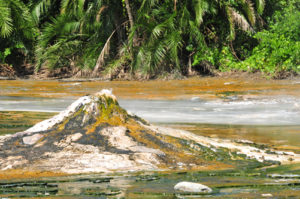 The water gushing out is hot enough to boil eggs in ten minutes. In the past the people living in the forest would use the hot springs to cook food but this has been limited by the park management to allow tourists visit the place. As visitors head towards the hot springs, they encounter several species of birds and small primates climbing up and down the trees. The park authorities have built a tower and boardwalk for observing the hot springs at a safe distance. Local tribes usually organize cultural dances to entertain visitors who have come to see the hot springs. Apart from the hot springs, birds and primates, visitors can also visit the Mungiro Falls or go for a forest walk nearby.
The water gushing out is hot enough to boil eggs in ten minutes. In the past the people living in the forest would use the hot springs to cook food but this has been limited by the park management to allow tourists visit the place. As visitors head towards the hot springs, they encounter several species of birds and small primates climbing up and down the trees. The park authorities have built a tower and boardwalk for observing the hot springs at a safe distance. Local tribes usually organize cultural dances to entertain visitors who have come to see the hot springs. Apart from the hot springs, birds and primates, visitors can also visit the Mungiro Falls or go for a forest walk nearby.
Visiting the Semuliki River: Semuliki River is about 160 kilometers long. This muddy forest river is one of the water bodies that supply water to the great river Nile. The river is home to crocodiles, hippos and hundreds of birds. Visitors love taking long walks to follow the river as it meanders through forests and rift valley flours.
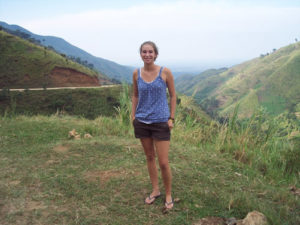 Forest and Nature Walks: One of the popular activities in the park is taking a walk in the forest jungles to spot the vegetation, birds, butterflies and primates. Forest Walks usually begin from around the Sempaya park gate ending at the hot springs. There are three established walking trails in the park. One of them is the Sempaya Nature trail which is 8 km long, the Red-monkey track of about 11 km and the Kirumia Hiking trail of 13 Kilometers. Hikers need to carry rudimentary items like machete to cut overgrown vegetation as they clear paths in the forest. Visitors interested in camping in the forest need to come with their own equipment.
Forest and Nature Walks: One of the popular activities in the park is taking a walk in the forest jungles to spot the vegetation, birds, butterflies and primates. Forest Walks usually begin from around the Sempaya park gate ending at the hot springs. There are three established walking trails in the park. One of them is the Sempaya Nature trail which is 8 km long, the Red-monkey track of about 11 km and the Kirumia Hiking trail of 13 Kilometers. Hikers need to carry rudimentary items like machete to cut overgrown vegetation as they clear paths in the forest. Visitors interested in camping in the forest need to come with their own equipment.
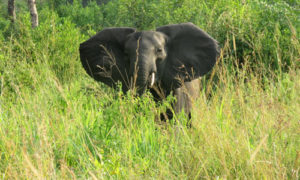 Game drives: Game drives in Semuliki National Park offer opportunities to spot over 52 mammals already mentioned. The park has three major tracks used for game drives that pass through the savannah plains of the park. Both day and night game drives are arranged by staff in the park. Visitors need to come with a good four wheel drive vehicle to pass through the more difficult sections of the park particularly during the rainy season.
Game drives: Game drives in Semuliki National Park offer opportunities to spot over 52 mammals already mentioned. The park has three major tracks used for game drives that pass through the savannah plains of the park. Both day and night game drives are arranged by staff in the park. Visitors need to come with a good four wheel drive vehicle to pass through the more difficult sections of the park particularly during the rainy season.
Chimpanzee tracking: The Indiana University habituated some clans of Chimpanzee that are now open for tourism. Chimpanzee tracking permits cost $30 for international visitors. While tracking the chimpanzees, visitors should also expect to spot smaller primates like the Black and white Colobus monkeys, Central African red colobus, Dent’s Mona monkeys, grey-cheeked mangabey, Olive baboons and Red-tailed monkeys among many others. It is important to come prepared with the right clothing and equipment to protect against stinging insects, sharp tree branches and thorns. Come with enough drinking water and light snack.
Cultural visits and experiences: The area around the National park is home to by four indigenous tribes. Visitors can choose to visit any of the four tribes living in the edges of the park. The Batwa pygmies are hunters and forest gatherers while the Bakonjo and Bamba grow crops (rice, matooke/bananas, potatoes and cocoa) on the slopes of the mount Rwenzori. The Batuku live in the northern section of the park as pastoralists. Tourism and modernization is changing the lives of these tribes and particularly the Batwa. The Batwa used to live freely in the forests of Rwanda, Uganda and DR Congo but have been relocated to areas outside the national parks. Some of the Batwa in Semuliki National Park have been resettled in an area near Ntandi with the help of a Christian organization ADRA but with little success as they still find themselves longing for their old way of life in the forest. Some of the Batwa with support from the Uganda Wildlife Authority showcase their cultural heritage to visitors through dance, storytelling and other demonstrations. The Batwa grow and smoke Marijuana.
Birdwatching: Semuliki National Park is one of the best places for birdwatching in Uganda. Semuliki National Park has half of the bird species found in the Democratic Republic of Congo because the park is an extension of the greater Ituri forest of the DR Congo which stretches up to river Zaire. This extension allows species from central Africa to move up to Semuliki National Park. Birding in the park can be done in the forest, around the Sempaya hot springs or behind the rangers post. 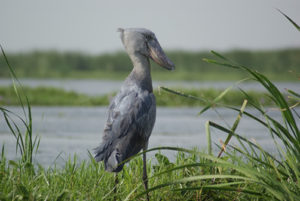 Apart from species already mentioned earlier, others include the African Dwarf Kingfishers, African Piculet, Bates’ Nightjar, Black Dwarf Hornbill, Black-collared Lovebird, Black-wattled Hornbills, African Goshawk, Ayres Hawk-Eagle, Cassin’s Spinetail, Great Sparrows, Red-thighed Sparrows, White-spotted Flufftail, Black-winged Starling, Brown-crowned Eremomela, Chestnut-breasted Negro finches, Chestnut-flanked Goshawk, Chocolate-backed, Crested Malimbes, Eastern Bearded Greenbuls, Forest Francolin, Forest Thrushes, Gabon Woodpecker, Grant’s Bluebill,Green-tailed Bristlebill, Grey Ground Thrushes, Hartlaubs’s Duck, Ituri Batis, Lemon-bellied Crombec, Maxwell’s Black Weaver, Northern Bearded Scrub Robin, Pale-fronted finches, Piping Hornbills, Red-bellied Malimbes, Red-billed Dwarf, Red-billed Helmet Shrike, Red-chested Owlet, Red-eyed Puff-back, Red-rumped Tinkerbird, Red-sided Broadbill, Red-thighed Sparrowhawk, Simple Greenbulls,Spot-breasted Ibis, Spotted Lyre-tailed Honeyguides, Western Bronze-napped Pigeon, White-bellied Kingfisher, White-throated Blue Swallow, Yellow-throated Cuckoo, Yellow-throated Nicator and Zenker’s Honeyguides. Late in the evening, you can start to hear the nocturnal residents like the African Wood Owl and the Buff-spotted Flufftail.
Apart from species already mentioned earlier, others include the African Dwarf Kingfishers, African Piculet, Bates’ Nightjar, Black Dwarf Hornbill, Black-collared Lovebird, Black-wattled Hornbills, African Goshawk, Ayres Hawk-Eagle, Cassin’s Spinetail, Great Sparrows, Red-thighed Sparrows, White-spotted Flufftail, Black-winged Starling, Brown-crowned Eremomela, Chestnut-breasted Negro finches, Chestnut-flanked Goshawk, Chocolate-backed, Crested Malimbes, Eastern Bearded Greenbuls, Forest Francolin, Forest Thrushes, Gabon Woodpecker, Grant’s Bluebill,Green-tailed Bristlebill, Grey Ground Thrushes, Hartlaubs’s Duck, Ituri Batis, Lemon-bellied Crombec, Maxwell’s Black Weaver, Northern Bearded Scrub Robin, Pale-fronted finches, Piping Hornbills, Red-bellied Malimbes, Red-billed Dwarf, Red-billed Helmet Shrike, Red-chested Owlet, Red-eyed Puff-back, Red-rumped Tinkerbird, Red-sided Broadbill, Red-thighed Sparrowhawk, Simple Greenbulls,Spot-breasted Ibis, Spotted Lyre-tailed Honeyguides, Western Bronze-napped Pigeon, White-bellied Kingfisher, White-throated Blue Swallow, Yellow-throated Cuckoo, Yellow-throated Nicator and Zenker’s Honeyguides. Late in the evening, you can start to hear the nocturnal residents like the African Wood Owl and the Buff-spotted Flufftail.
When to go and visit Semuliki National Park
Semuliki National Park is opened throughout the year. However, the best months to visit are during the dry seasons of April – June and July – September. During these dry months, driving through the park is easier because of less mud. The rainy season which fall between December – March and October to November cause difficulty navigating through the park. Some sections of the park become flooded as the rains fill up the rivers.
Accessing Semuliki National Park
The journey from Kampala to Fortportal by road is 300 km. There are two roads from Kampala to the park. One can use the shorter Kampala to Fort Portal road via Mubende which takes between four to five hours or use the longer route from Kampala through the towns of Kasese, Mbarara and Masaka. This longer journey (7 to 8 hours of driving) offers opportunities to see some of Uganda’s great national parks like Queen Elizabeth, Rwenzori Mountains and Lake Mburo. Once one reaches Fort Portal town it takes about 52 kilometers to reach the junction leading to the park from the main highway. One needs a good 4 Wheel drive to pass through the park roads especially during the wet season.
Those using public means need to get a taxi to Bundibugyo from Fort Portal town and stop at the Sempaya gate of the park. The Park offices in Ntandi are 5km away from the Sempaya gate. Public transport to Bundibugyo is not reliable and one may need to wait a while before the taxis and minibuses heading to Bundibugyo arrive especially in the evening.
Accommodation in Semuliki National Park
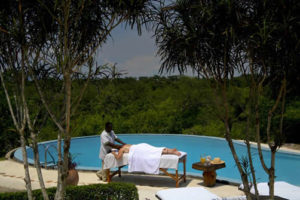 There are few accommodation facilities within the park. Most of the good hotels and lodges are in the towns of Bundibugyo and Fort Portal. The Uganda Wildlife Authority came up with a solution and set up two campsites near their main offices and gate. It is important to book these hotels in advance in order not to miss out on the rooms especially the budget ones. Let’s look at the services offered by these campsites and other hotels in greater depth:
There are few accommodation facilities within the park. Most of the good hotels and lodges are in the towns of Bundibugyo and Fort Portal. The Uganda Wildlife Authority came up with a solution and set up two campsites near their main offices and gate. It is important to book these hotels in advance in order not to miss out on the rooms especially the budget ones. Let’s look at the services offered by these campsites and other hotels in greater depth:
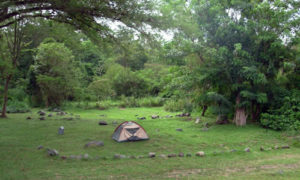 Campsites and Bandas by the Uganda Wildlife Authority: The campsites are built 3 km away from the Sempaya trail where most activities in the park begin. Although the rooms in the bandas are comfortable, there are no meals. Visitors need to order for the meals or hire cooking utensils if you wish to cook your own packed food.
Campsites and Bandas by the Uganda Wildlife Authority: The campsites are built 3 km away from the Sempaya trail where most activities in the park begin. Although the rooms in the bandas are comfortable, there are no meals. Visitors need to order for the meals or hire cooking utensils if you wish to cook your own packed food.
Semliki Safari Lodge: This lodge is the oldest in the area and is found in the Semliki Wildlife Reserve near the park with wonderful views of Congo’s Blue Mountains. The lodge is made up of luxury tents that are built with local material without jeopardizing quality. 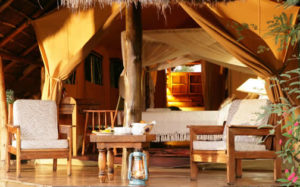 About 18 people can be accommodated in a day. As the only lodge in area of about 500 sq km, it offers a truly private wilderness experience. Some of the facilities in the lodge include a bar, restaurant, hot showers, comfortable sofas, a lounge area, reading area and a swimming pool. Food and breakfast can be brought to the room and comprise of well-made local and international cuisines. The lodge helps run a chimpanzee research project in collaboration with the Indiana University. Residents can therefore have an opportunity of visiting the researchers and to learn about the process of habituating chimpanzee and how studying their lifestyle helps understand the evolution of man.
About 18 people can be accommodated in a day. As the only lodge in area of about 500 sq km, it offers a truly private wilderness experience. Some of the facilities in the lodge include a bar, restaurant, hot showers, comfortable sofas, a lounge area, reading area and a swimming pool. Food and breakfast can be brought to the room and comprise of well-made local and international cuisines. The lodge helps run a chimpanzee research project in collaboration with the Indiana University. Residents can therefore have an opportunity of visiting the researchers and to learn about the process of habituating chimpanzee and how studying their lifestyle helps understand the evolution of man.
Ntoroko Game Lodge: This lodge is also built at the Semuliki Wildlife reserve near Lake Albert. The lodge has Luxury tents that are next to the beautiful and unspoiled sand beaches of Lake Albert. Ntoroko Game Lodge is suitable for visitors on honeymoon vacation and desire privacy. The lodge has beautiful wooden floors and stylish stone exteriors with great views of Lake Albert. There are both single and double rooms which have fans, a safe, hairdryers, heaters and private balconies.
Kirimia Guesthouse: This guesthouse is built 10 km away from the Sempaya gate towards Bundibugyo town in the village of Kirimia. The guesthouse is popular with tourists because it offers budget rooms that are still of good quality. The rooms are self-contained and meals can be served in the room on request. Because it is built near the Kirimia Head Trail (for birding) and the park headquarters in Ntandi, visitors to this guesthouse can use it as a starting point to go for game drives, bird watching and spotting primates like chimpanzee and Colobus monkeys.
Hotel Vanilla: Hotel Vanilla is a budget hotel found in Bundibugyo town and close to the largest town market. The hotel rooms are clean and self-contained with showers. Meals are served from the hotel restaurant while drinks can be ordered from the hotel bar.

